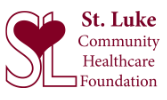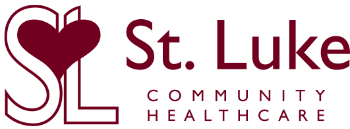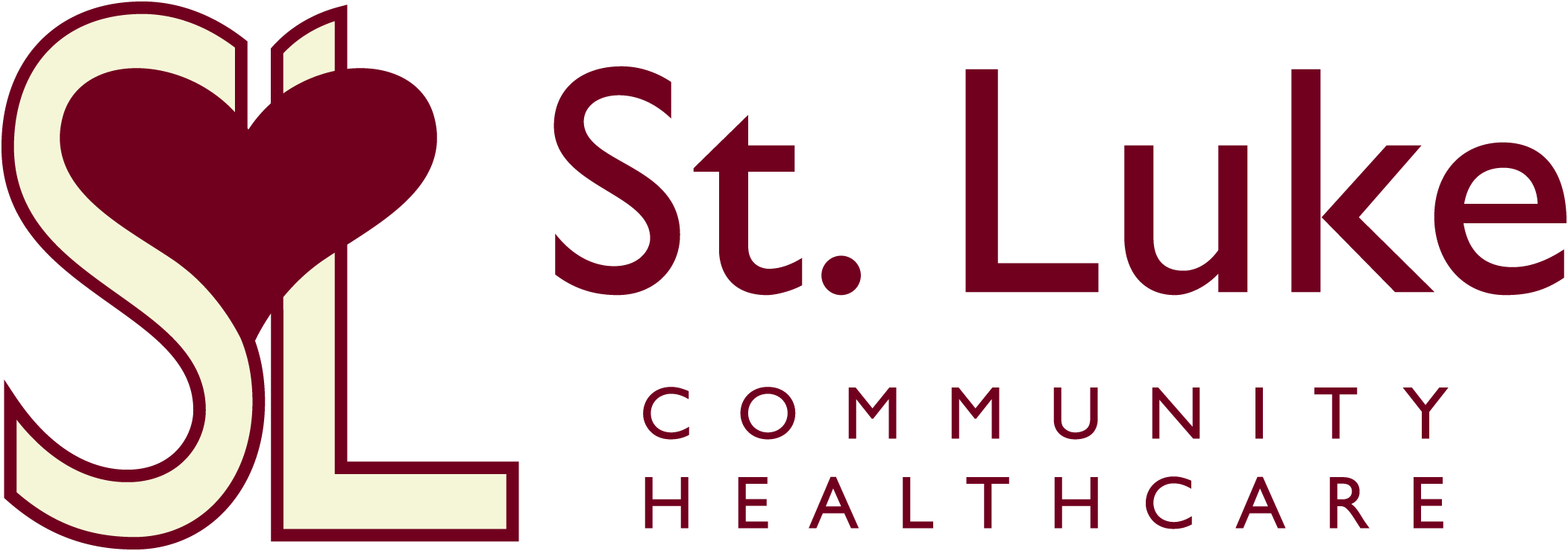St. Luke Hospital
(406) 676-4441
Nurse On Call 24/7
(located in Montana)
(406) 676-3737
Clinics
Ronan (406) 676-3600
St. Ignatius (406) 745-2781
Polson/Southshore (406) 883-2555
Polson/Ridgewater (406) 883-3737
Good Health Doesn’t Happen by Accident
Vaccines work. That’s backed by history and science.
Below, explore a few of the diseases that have either been vastly reduced or completely eliminated through the process of vaccination. The team at St. Luke Community Healthcare encourages you to stay on top of your vaccination needs by meeting with your physician at least once a year. They will guide you through the process and answer any questions you may have. With so much misinformation online, turn to the expert you trust – your family practice doctor.
Tetanus
- Documents noting tetanus have been seen in history dating back to 1500 BC in Egypt. However, it was not until the 20th century that tetanus was well understood. This is when tetanus was discovered to be caused by the bacteria tetanus bacillus that enters the body through surface wounds on the skin.
- The first inactive tetanus vaccine was discovered in 1924 by a group of German scientists under the leadership of Emil Von Behring. Tetanus cannot be eradicated because of its common presence in the environment, including soil, dust, and manure.
- Because the only way to control tetanus infection is through vaccination, the vaccine was introduced in routine childhood vaccinations in the 1940s, which has led to declines in infection.
- Symptoms of tetanus include jaw cramping, sudden involuntary muscle tightening – often in the stomach, painful muscle stiffness all over the body, trouble swallowing, seizures, headache, fever and sweating, changes in blood pressure, and fast heart rate.
Diphtheria
- Diphtheria was first discovered in the 5th century B.C. by the Greeks, with an epidemic following in the 6th century A.D.
- Emily von Behring won a Nobel peace prize for inventing the vaccine.
- During the 1920’s, cases were in the range of 140 – 150 per 100,000 people. However, after the vaccine in 1940, case numbers dropped to 15 per 100,000 people. By the 1980’s the disease had almost completely been eradicated by systematic vaccination. From 1996 through 2018 only 14 cases were reported and only one death.
- Diphtheria is a highly infectious disease, transmitted through close contact with the discharge from an infected person’s eyes, nose, throat, or skin. It has been known to cause difficulty breathing, heart failure, and paralysis.
Pertussis
- Pertussis first appeared in the 16th century, spreading so quickly that it became the 20th century’s most common childhood disease and a major cause of childhood mortality.
- This highly contagious respiratory disease is caused by the bacterium bordatella pertussis. Outbreaks of pertussis were discovered by Guillame de Baillou in the 16th century. The first effective pertussis vaccine was invented by Pearl Kendrick and Grace Eldering. The vaccine was licensed in the U.S. in 1914 and was available as a combined vaccine (with diphtheria and tetanus) in 1948. The vaccine is known as DTP.
- Before the vaccine, 200,000 cases were reported annually. Since then, around 50,000 are reported.
- Symptoms of pertussis include coughing fits followed by a high-pitched “whoop” sound, vomiting during coughing fits, and exhaustion.
Measles
- Measles was first discovered in the 7th century and later described by Persian physician Rhazes as “more to be dreaded than smallpox.”
- John Enders created the vaccine in 1963. In 1971, the MMR (measles, mumps, and rubella) combined vaccine was invented.
- 1 person with measles can infect 12-18 people, making it the most infectious – yet vaccine preventable – disease. 9 out of 10 susceptible people (unvaccinated/never had measles) who are exposed will become sick. In 2019, measles infected over 9 million people worldwide. It is one of the leading causes of death among young children even though a safe and cost-effective vaccine is available.
- Measles is transmitted through coughing and sneezing. Symptoms include high fever, runny nose, red watery eyes, and a subsequent distinguishable measles rash.
Mumps
- Mumps was first discovered in the 5th century BC by Hippocrates. At the time, mumps was the leading cause for childhood aseptic meningitis (inflammation of the brain and spinal cord membranes) and hearing loss. Mumps became well understood in the 1930’s when Claud Johnson discovered the virus that caused the disease.
- Maurice Hilleman, responsible for developing more than forty vaccines, invented the mumps vaccine in 1967, which was recommended for routine use by 1977, significantly decreasing the infection rate in subsequent years.
- In 1968, 152,000 US cases were reported. By 1985, that number had dropped to 3,000 cases. However, cases have picked up in recent years, with more than 9,000 cases reported since 2019.
- Mumps is transmitted through direct contact with the saliva or respiratory droplets of an infected person.
Symptoms include discomfort in the salivary glands, difficulty chewing, inflammation of testicles or ovaries, fever, headache, muscle aches, tiredness, and loss of appetite.
Rubella
- Rubella was first discovered in 1814 by George Maton and was originally thought to be a mild infection. However, by 1941, newborns were discovered to have Congenital Rubella Syndrome and Rubella was found in nearly every person by the 1960’s.
- Infections decreased rapidly after the vaccine was invented by Stanley Plotkin, who also worked on vaccines for anthrax, polio, rabies, and rotavirus. Plotkin, a pediatrician and vaccinologist, is credited with eradicating the Rubella virus in the United States by 2004.
- Rubella is spread by direct contact with the nasal or throat secretions of infected individuals, or through breathing in droplets that are sprayed into the air when a sick person sneezes, coughs, or talks.
- Latin for “little red”, rubella is also known as altered measles, scarlet fever or “German measles.” Symptoms include low grade fever, sore throat, and a rash that starts on the face. Rubella can also cause miscarriage or serious birth defects in a developing baby if a pregnant woman gets infected.
Polio
- The first evidence of polio was in England in 1789, but it became an epidemic in the late 19th century. In the early 20th century, those living in the northern hemisphere experienced polio seasonally it was so common.
- The peak infection in the United State was 21,000 paralytic cases in 1952.
- The polio vaccine was developed in the 1950’s by American Physician, Jonas Salk at the University of Pittsburgh, and cases dropped quickly after it was released. The last case was acquired in 1979. The US has been considered polio free ever since – thanks to the successful vaccination program.
- Polio is transmitted through the stool of an infected person – usually via contaminated food or water.
- Symptoms vary widely. Some strains caused paralysis, while others didn’t. Other common symptoms included fever, sore throat, back/neck pain, and body stiffness or tenderness. Post-polio syndrome left individuals with progressive muscle or joint weakness/pain, fatigue, muscle wasting, breathing or swallowing problems, and sleep related breathing disorders.
HPV
- Human Papillomavirus, or HPV, is the most common sexually transmitted infection (STI). The majority of cases are asymptomatic.
- Most sexually active adults will have HPV at some point. However, before the vaccine was introduced, an estimated 79 million people in the U.S. were infected, with the number later dropping to 14 million.
- Ian Frazer and Jian Zhou designed and tested the vaccine for seven years until the first human trials for the vaccine were approved in 1998.
- HPV is transmitted through close skin-to-skin contact during sex, including oral sex. It can be transmitted through saliva, but that is more rare.
- Symptoms include genital warts, common warts, plantar warts, and flat warts. HPV can also cause cervical cancer, twenty years or more after infection.
Shingles
- Often disguised as other diseases, William Heberden finally isolated the disease in the mid-19th century. Shingles was not well understood until the 1950’s because of its connection with chickenpox. Thomas Weller proved the connection between the two in 1953.
- The zoster vaccine, invented by Dr. Abbas Vafai, was introduced in the United States in 2006 and protects against both shingles and chickenpox.
- Shingles is caused by the same virus that causes chickenpox. The virus stays dormant and can reactivate later, causing shingles. You can get shingles more than once.
- Shingles symptoms include painful rashes, burning, numbness or tingling, sensitivity to touch, blisters, itching, fever, and fatigue.
Pneumonia
- Symptoms of pneumonia were first discovered by Hippocrates around 460 BC. However, it wasn’t until the 19th century when scholars identified the virus as pneumonia. Pneumonia is the single largest infectious cause of death of children worldwide. A number of viruses, bacteria, and fungi can lead to pneumonia.
- The first vaccine was invented in 1911 by Sir Almroth Wright, however with the advent of penicillin and other effective antipneumococcal drugs, interest in vaccination decreased. Interest was revived when it was demonstrated that some individuals were at higher risk of death and after the emergence of multidrug-resistant pneumonia. The licensed vaccine was released in 1977.
- The CDC generally recommends pneumococcal vaccination for all children younger than 2 years old and all adults 65 years or older.
- Pneumonia can be spread a number of ways including droplet transmission from coughing or sneezing, as well as blood transmission. More research is still being done on the pathology of the virus. Vaccination is the most effective way to prevent pneumonia.
- Symptoms of pneumonia include cough, fever, shortness of breath, sharp chest pain that worsens with deep breathing or coughing, nausea and vomiting, and fatigue.
Hepatitis B
- Hepatitis B was first described in the 5th century BC, with the first recorded case occurring in 1883. In 1943, transmission via blood was discovered.
- Vaccine invention has been attributed to Drs. Blumberg and Millman, and biochemist, Pablo DT Valenzuela. Cases dropped quickly after the vaccine was released, from 9.6 cases per 100,000 people in 1982 to 1 case per 100,000 people in 2018.
- Although the origin of the virus is unknown, researchers have discovered it may be related to ancient African radiation.
- Hepatitis B is transmitted when blood or bodily fluids from an infected person enters the body of someone who is not. This can happen through sexual contact; sharing needles, syringes, or other drug-injection equipment; or from mother to baby at birth.
- Symptoms of Hepatitis B include fatigue, poor appetite, stomach pain, nausea, and jaundice.
Influenza
- The first flu pandemic was recorded in 1580 and the virus was officially discovered in 1933 by Dr. Richard Shope. The flu virus is ever-changing and has many different names, from the Spanish Flu to the Asiatic Flu. The Spanish Flu was the most severe flu pandemic in recent history, with an estimated 500 million people infected and at least 50 million deaths worldwide.
- In 1938, Jonas Salk and Thomas Francis developed the first vaccine against flu. Others then worked to develop the first inactivated flu vaccine with support from the U.S. Army.
- Due to its ever-changing nature, the flu still contributes to a significant numbers of deaths every year. Influenza pandemics occur almost annually, however research studies have immensely improve the etiology and understanding of the virus. A process called genetic sequencing helps scientists determine which strains to vaccinate against each year.
- The flu is transmitted mainly by droplets made when someone with the flu coughs, sneezes, or talks. These droplets can possibly be inhaled into someone else’s lungs.
- Symptoms of the flu include fever, cough, sore throat, runny or stuffy nose, muscles or body aches, headaches, fatigue, and occasionally vomiting or diarrhea.
COVID-19
- The novel human coronavirus disease COVID-19 has become the fifth documented pandemic since the 1918 flu pandemic. COVID-19 was first reported in Wuhan, China, and subsequently spread worldwide. The coronavirus was officially named severe acute respiratory syndrome coronavirus 2 (SARS-CoV-2) by the International
- Committee on Taxonomy of Viruses based on phylogenetic analysis. SARS-CoV-2 is believed to be a spillover of an animal coronavirus and later adapted the ability of human-to-human transmission. Because the virus is highly contagious, it rapidly spreads and continuously evolves in the human population.
- Scientists Drew Weissman and Katalin Karikó developed the revolutionary mRNA technology behind COVID vaccines. The pair met in 1998 and after years of research, found two companies in 2013 who were willing to license their patents. By the time COVID-19 emerged, Moderna and BioNTech had been working on developing mRNA influenza vaccines and other therapies for years. As soon as China released the genome sequence for the new coronavirus, both companies began working towards a vaccine. Trials showed the vaccines to be both effective and safe.
- Vaccination is the best way to protect yourself against serious infection. Masking, avoiding crowds, testing when sick, physically distancing from others, and washing/sanitizing your hands often also help limit the spread of infection.
- COVID-19 is largely transmitted through droplets when an infected person breathes out droplets and very small particles that contain the virus. These are then breathed in by other people or land on their eyes, noses, or mouth. People who are closer than six feet from the sick person are most likely to get infected.
- Symptoms vary widely and can be anywhere from mild to severe. They include fever or chills, cough, shortness of breath or difficulty breathing, fatigue, muscle or body aches, headache, new loss of taste or smell, sore throat, congestion or runny nose, nausea or vomiting, and diarrhea.
- COVID-19 most often causes respiratory symptoms that can feel much like the cold, a flu, or pneumonia. Older adults and people with underlying medical conditions seem to be at higher risk for developing more serious complications from COVID-19 illness. Approximately 1 million Americans have died from COVID-19 related illness or complications.
Information Sources:
- https://www.cdc.gov
- http://miamioh.edu/
- https://www.chop.edu/
- https://journals.asm.org/
- https://www.bu.edu/
- https://www.emedicinehealth.com/
- https://www.history.com
- https://academic.oup.com/journals
- https://www.cnbc.com/
- https://pubmed.ncbi.nlm.nih.gov/
- https://americanhistory.si.edu/
- https://www.britannica.com/science/
- http://www.vch.ca
- https://www.nomancampaign.org/
- https://carrington.edu/
- https://www.news-medical.net/
- https://www.philanthropyroundtable.org/
- https://www.bmj.com/
- https://www.wikipedia.org/
- https://otm.uic.edu/
- https://www.sciencedirect.com/
- https://www.medscape.com/
- https://historyofvaccines.org/
- https://www.bu.edu/articles/2021/how-drew-weissman-and-katalin-kariko-developed-mrna-technology-inside-covid-vaccines/

Are you up to date on your vaccinations?
Schedule an appointment today to visit with your trusted primary care physician.
Need to establish care?
St. Luke Community Clinics are conveniently located throughout the Mission Valley. Call today to set up your appointment.
Other Helpful Vaccine Resources:
Lake County Public Health:
https://lakecountypublichealth.org/
Montana Immunization Program:
https://dphhs.mt.gov/publichealth/Immunization/index
Montana COVID-19 Vaccine Resource Page:
https://dphhs.mt.gov/covid19vaccine/
Immunize.org:
https://www.immunize.org/vaccines/
CDC:
FDA:
https://www.fda.gov/vaccines-blood-biologics/vaccines
The Vaccine Confidence Project:
https://www.vaccineconfidence.org/
Indian Health Service – Vaccines:
https://www.ihs.gov/california/index.cfm/professionals/coronavirus-2019-covid-19/vac-confidence/

What to expect at your appointment:
Bring your ID and insurance card – and let us know if have any secondary insurance. If required, please be prepared to pay your insurance plan’s required co-pay and try to arrive 10 to 15 minutes early to finish the check in process. If you need to cancel or reschedule, we do ask that you give a 24 hour notice, so we are able to offer the appointment time to another patient.
- Your first appointment may be for an acute medical condition where most likely you will just discuss that particular problem, or your first appointment may be to establish care as a new patient. If you’re a new patient, please gather all of your past medical history. This information is crucial for your doctor so that he/she can provide you with the best care possible. If you get to the appointment before we have your medical records, please be prepared to discuss some or all of the following:
- Test dates (for example, when was your last physical?)
- Immunization records (what you have and haven’t gotten)
- Surgical records (reasons for the surgery, as well as outcomes)
- Allergies
- Past health care providers
- Prescriptions (you can even simply bring all of your prescriptions with you)

Vaccines train your immune system to create antibodies, just as it does when it’s exposed to a disease. However, they do not actually cause the disease or put you at risk of its complications. Vaccines go through extensive testing and it is incredibly rare to have a bad reaction to a vaccine. We can help you decide which vaccines are recommended for you and your loved ones.
This program is supported by Health Resources and Services Administration (HRSA) of the U.S. Department of Health and Human Services (HHS) as part of awards totaling $98 million with 0% financed with nongovernmental sources. The contents are those of the author(s) and do not necessarily represent the official views of, nor an endorsement, by HRSA, HHS, or the U.S. Government. For more information, please visit HRSA.gov.
St. Luke is committed to making our website accessible to all users, including those with disabilites. If you encounter any issues or require aditional assistance with specific pages or forms, please contact our PR Manager at (406) 528-5262. Thank you.

MAKE A DIFFERENCE
Donate to the St. Luke Foundation

Join Our Team
Applications remain active for 1 year.
St. Luke is an Equal Opportunity Employer.

myHealth Portal
Keep track of medications, refills, receive lab results and update contact/insurance info.
FINANCIAL ASSISTANCE
If you are in need of services at St. Luke Community Hospital, and you are without healthcare coverage or have financial challenges, please print and complete a copy of the following forms.
© 2023 St. Luke Community Healthcare. All rights are reserved.
© 2023 St. Luke Community Healthcare. All rights are reserved.

